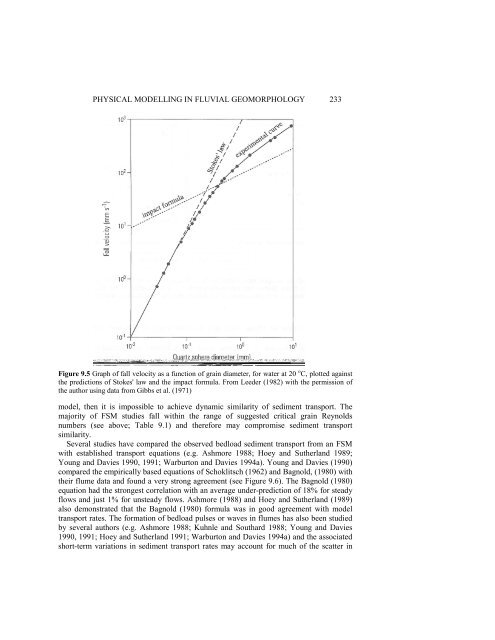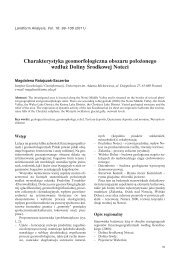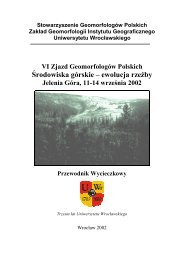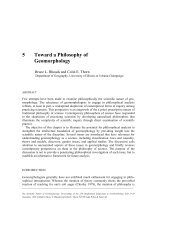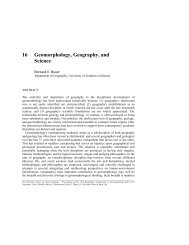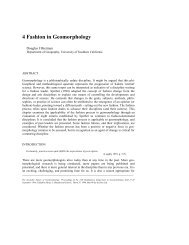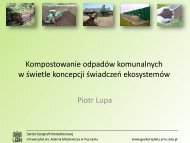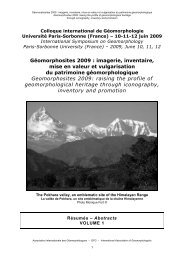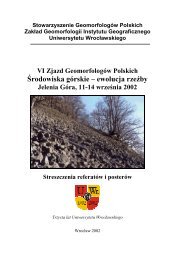Physical Modelling in Fluvial Geomorphology
Physical Modelling in Fluvial Geomorphology
Physical Modelling in Fluvial Geomorphology
You also want an ePaper? Increase the reach of your titles
YUMPU automatically turns print PDFs into web optimized ePapers that Google loves.
PHYSICAL MODELLING IN FLUVIAL GEOMORPHOLOGY 233<br />
Figure 9.5 Graph of fall velocity as a function of gra<strong>in</strong> diameter, for water at 20 o C, plotted aga<strong>in</strong>st<br />
the predictions of Stokes' law and the impact formula. From Leeder (1982) with the permission of<br />
the author us<strong>in</strong>g data from Gibbs et al. (1971)<br />
model, then it is impossible to achieve dynamic similarity of sediment transport. The<br />
majority of FSM studies fall with<strong>in</strong> the range of suggested critical gra<strong>in</strong> Reynolds<br />
numbers (see above; Table 9.1) and therefore may compromise sediment transport<br />
similarity.<br />
Several studies have compared the observed bedload sediment transport from an FSM<br />
with established transport equations (e.g. Ashmore 1988; Hoey and Sutherland 1989;<br />
Young and Davies 1990, 1991; Warburton and Davies 1994a). Young and Davies (1990)<br />
compared the empirically based equations of Schoklitsch (1962) and Bagnold, (1980) with<br />
their flume data and found a very strong agreement (see Figure 9.6). The Bagnold (1980)<br />
equation had the strongest correlation with an average under-prediction of 18% for steady<br />
flows and just 1% for unsteady flows. Ashmore (1988) and Hoey and Sutherland (1989)<br />
also demonstrated that the Bagnold (1980) formula was <strong>in</strong> good agreement with model<br />
transport rates. The formation of bedload pulses or waves <strong>in</strong> flumes has also been studied<br />
by several authors (e.g. Ashmore 1988; Kuhnle and Southard 1988; Young and Davies<br />
1990, 1991; Hoey and Sutherland 1991; Warburton and Davies 1994a) and the associated<br />
short-term variations <strong>in</strong> sediment transport rates may account for much of the scatter <strong>in</strong>


